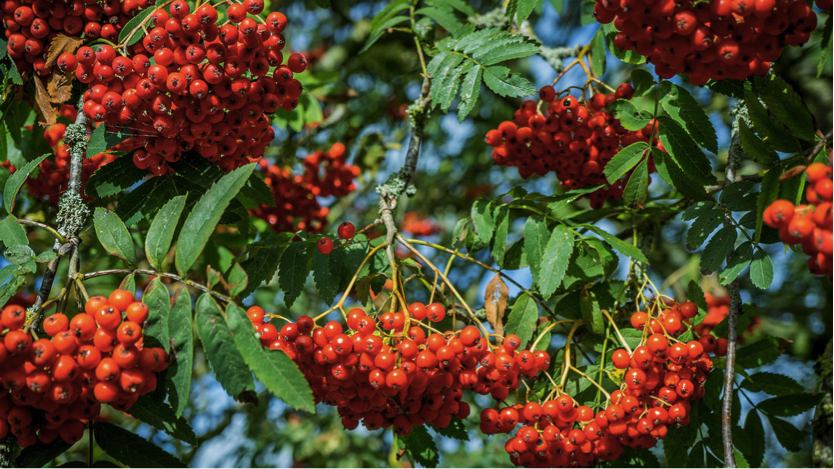As summer draws to a close and we head into the autumn months many of our native trees and shrubs become festooned in berries. None more so than the humble rowan (Sorbus aucuparia), colloquially known in parts of the country as the ‘mountain ash’.
Rowans are widely planted across many of Forest Carbon’s northern projects as they are hardy trees and fantastic for wildlife, especially at this time of year. Migrating birds such as fieldfare and redwing will soon begin to arrive from Scandinavia, as the far north starts to freeze over, and landing hungry in the UK they will gladly feast on the bright red berries of any rowan they find.
This is important because these birds, and others, then spread the rowan’s seed, flying away with a stomach full of berries before egesting the pips elsewhere. As a consequence, we often find rowans naturally regenerating within our woodland sites. This is encouraging, as it suggests that wild birds are landing on our young trees and using the habitat that has been newly created by our projects.
Some mammals will also eat rowan berries: badgers, for instance, are big fans. Other species find them less palatable and tend to be more circumspect. Pine martens will often gorge on rowan berries with the express aim of making themselves vomit. It is believed they do this to clean out their stomachs, but it could also be to advertise their presence to other members of their species.
Happily, when people consume rowan berries we are able to cook them first, and mix them with sugar. The result is rowan jelly, a tart jam that goes well with cheese and gamey meats. But it isn’t just the fruits that are important to us humans, for rowan trees have long been associated with magic. Our ancestors believed these trees could provide protection from witchcraft and other forms of sorcery.
For this reason, in Scotland in particular, rowan trees were often planted in front of the entrance to people’s homes, and it is still considered bad luck to cut one of these tough little trees down.
One of our planting partners, the Borders Forest Trust, have a particularly special rowan in their care. It is currently a contender for Scotland’s ‘Tree of the Year’. Head over to the competition website to understand why, and maybe you’ll be persuaded to cast your vote its way.

/public/694/2e2/b68/6942e2b689131175280316.jpg)
/public/692/dd7/e0c/692dd7e0ca905474952387.jpg)
/public/68f/f39/36d/68ff3936defff352354004.jpg)